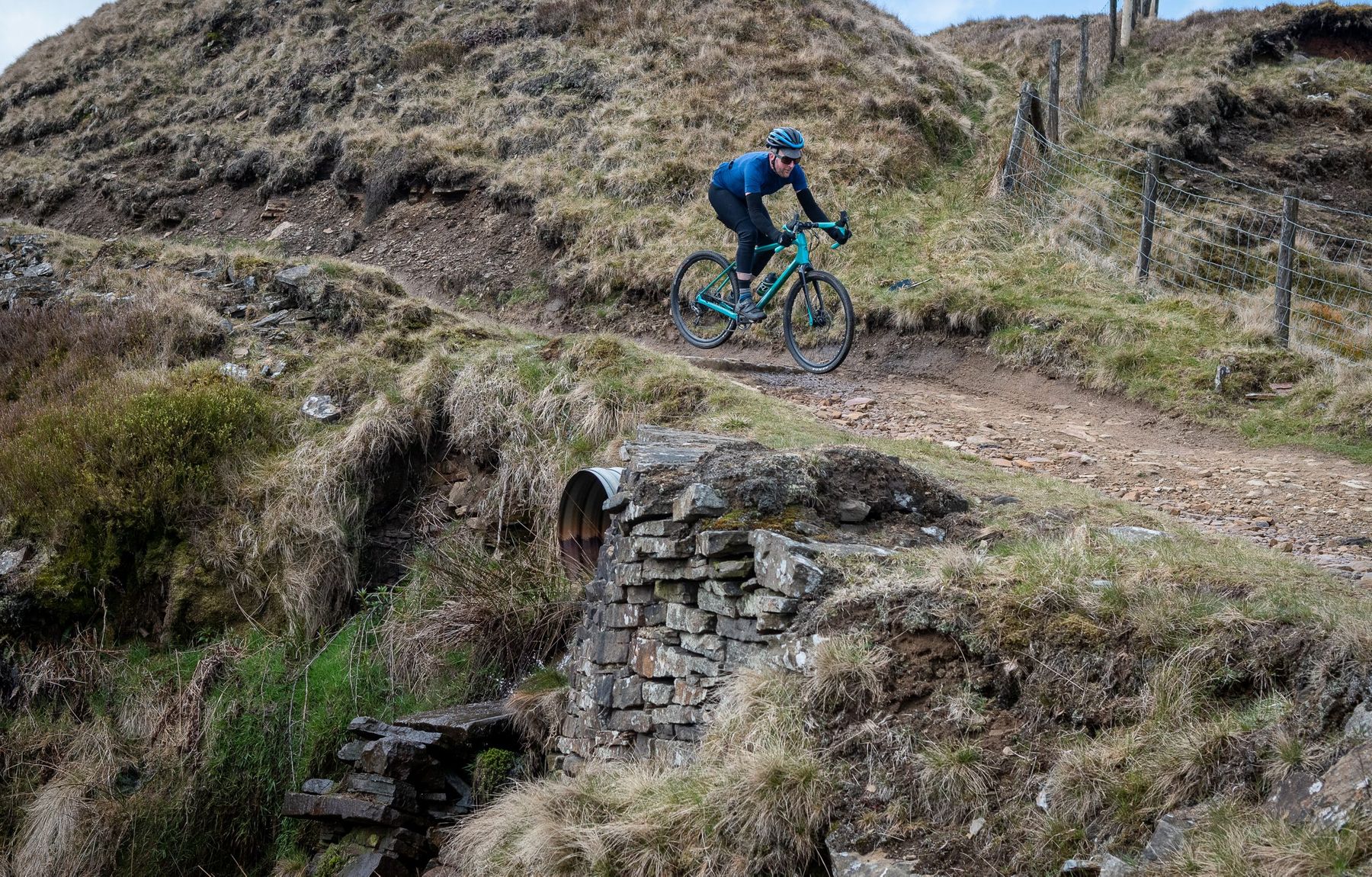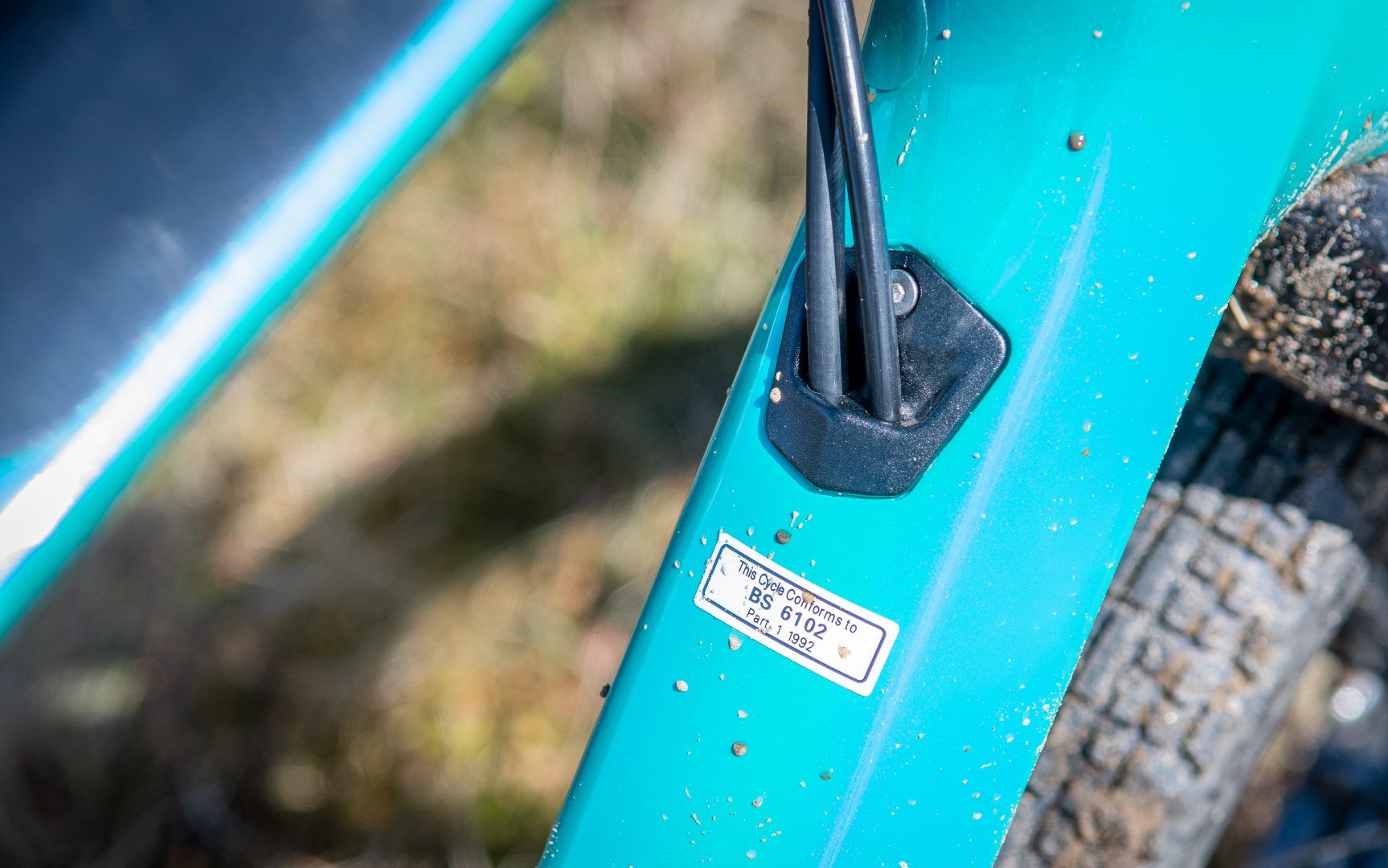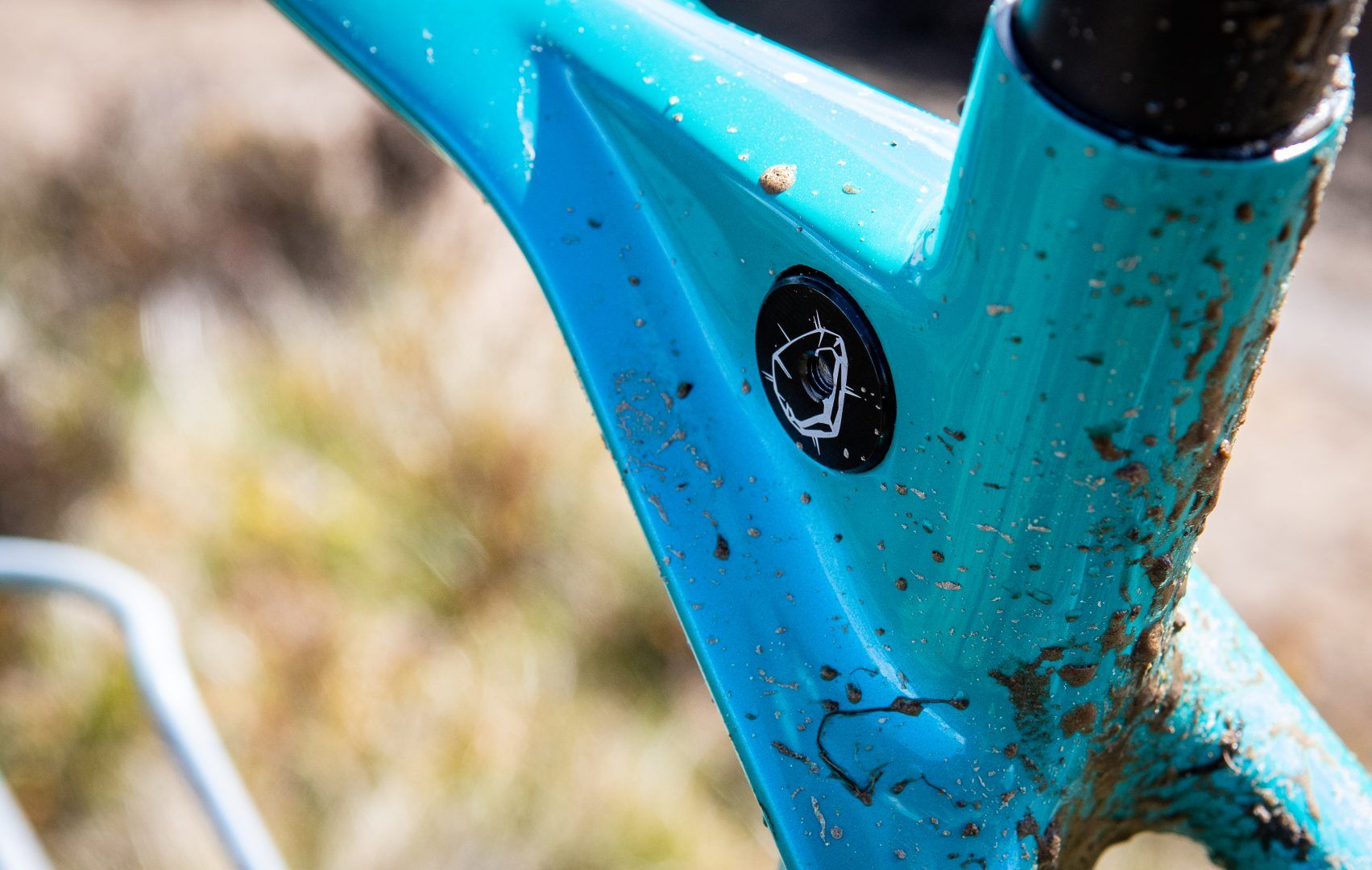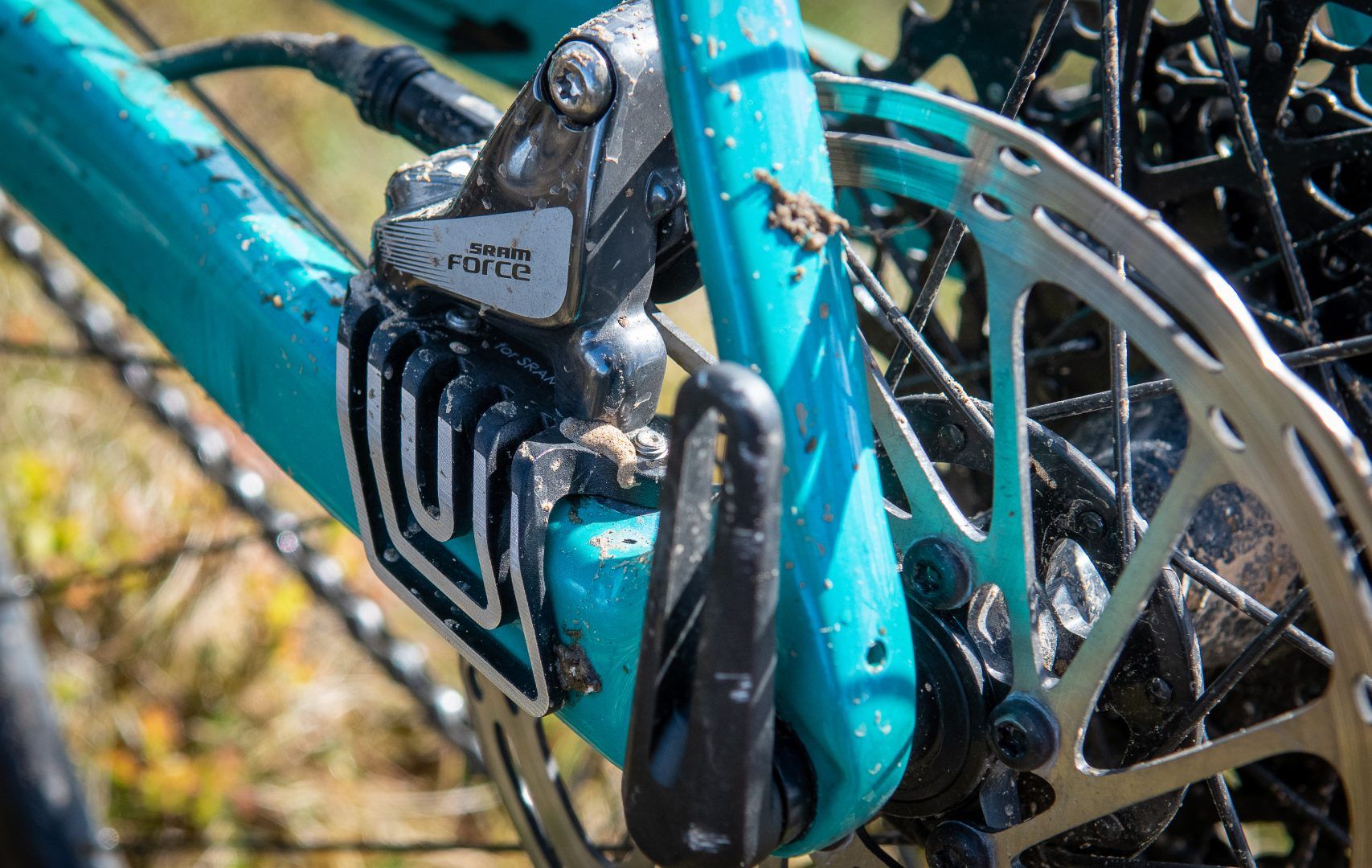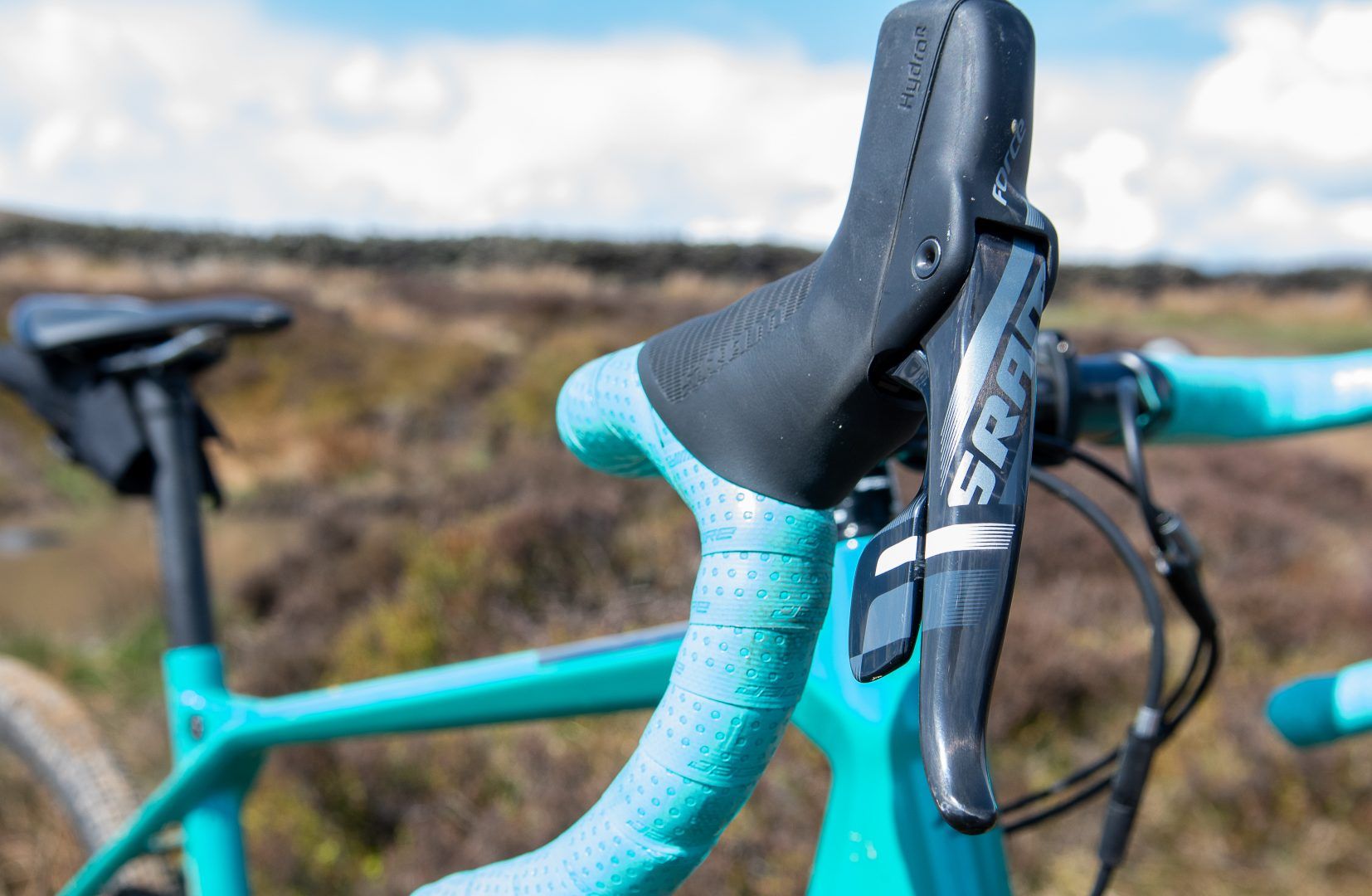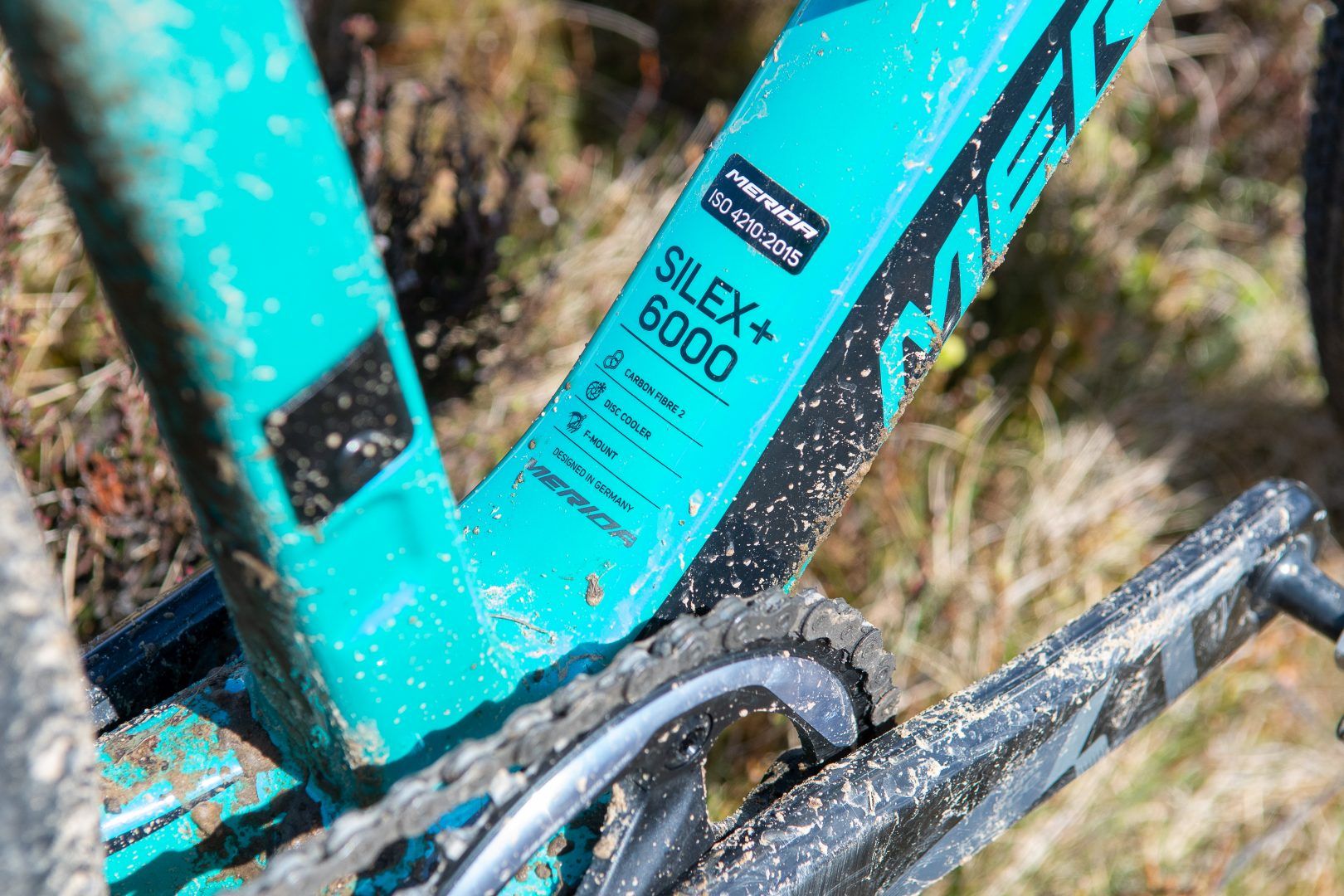650b or “road plus” wheels might have seemed like a fad when they started appearing on gravel bikes, but they’ve stuck around, partly due to good buy-in from tyre and wheel manufacturers, and partly, a cynical side of me thinks, because they give bike manufacturers an easy two-for-one. Pop some 650b wheels with fatter tyres in your 700c frame, and you’ve instantly got a different bike. Extra comfort and extra grip equals extra fun, right?
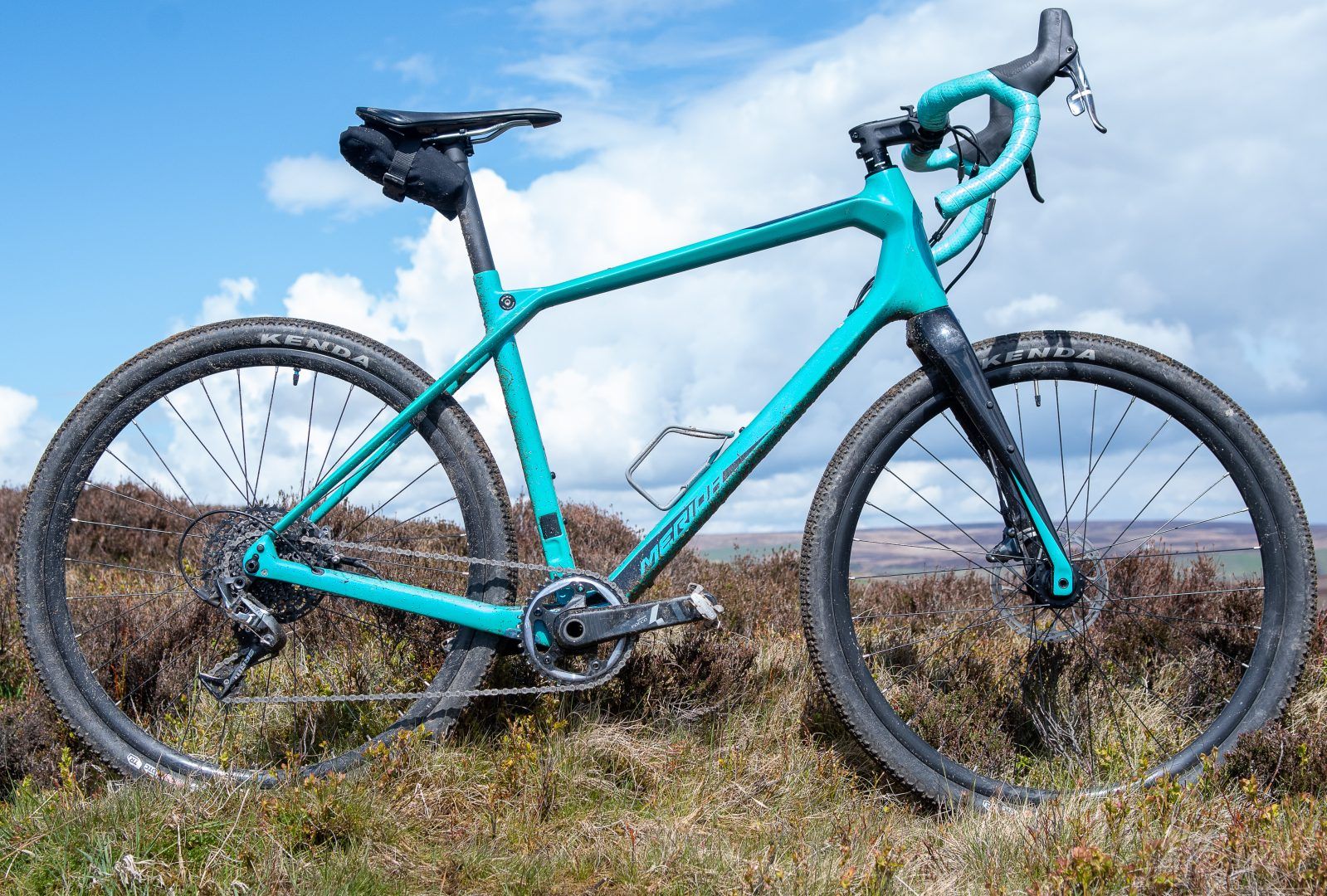
The Bike
The Silex is Merida’s only gravel bike, and here in the UK it’s available in five variations. The lower end models are 700c wheeled, alloy framed and seem to be built to hit a price point. Further up though, things get interesting, and the top models get carbon frames, 1x drivetrains and chunky Road Plus rubber. All the models can be run with either wheel size, assuming you’re prepared to stump up for a second set of wheels and tyres.
The Silex range also gets some interesting geometry. A long top tube and tall head tube (580mm and 200mm respectively, on my medium test bike) combine to give a bike that looks larger than life. The 650B wheels also drop the ride height slightly. Is the gravel bike world catching on to the “long, low and slack” school of thought that’s taken over MTB design? Not entirely – the angles are all fairly conventional, but as you can see from the geometry chart below, the sizing certainly isn’t.
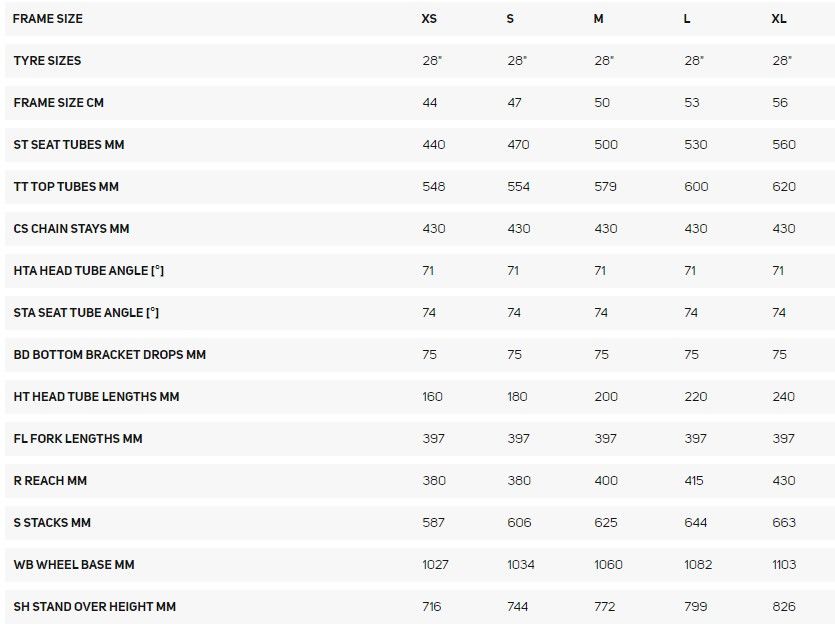
The Silex+ 6000 sits one down from the top-tier model in the range. For its RRP of £2,700 it’s solidly but not spectacularly specced. Its carbon frame has a claimed weight of just over a kilo (I have to confess I didn’t strip it down to check). There are some neat details on the frame: internal cable routing (including DI2 compatibility and plumbing for a dropper post), front and rear through axles (complete with a little removable lever), an integrated seatclamp, and a metal heat exchanger on the rear disc mount that supposedly cools your brake (not an issue in a chilly English spring, but you never know). There are a decent number of bottle and luggage mounts, including luggage cage mounts on the fork legs, mudguard bosses and even rear rack mounts.
Our test bike’s finish was “metallic teal”, which is not only bright, but also has a bit of a flip paint thing going on. Frankly I’m a bit vanilla for it to be to my taste, but the bike is also available in a stealthy charcoal/black combo. The stock bike also seems to come with black bar tape instead of the rather mermaidy turquoise stuff that adorned our demo.
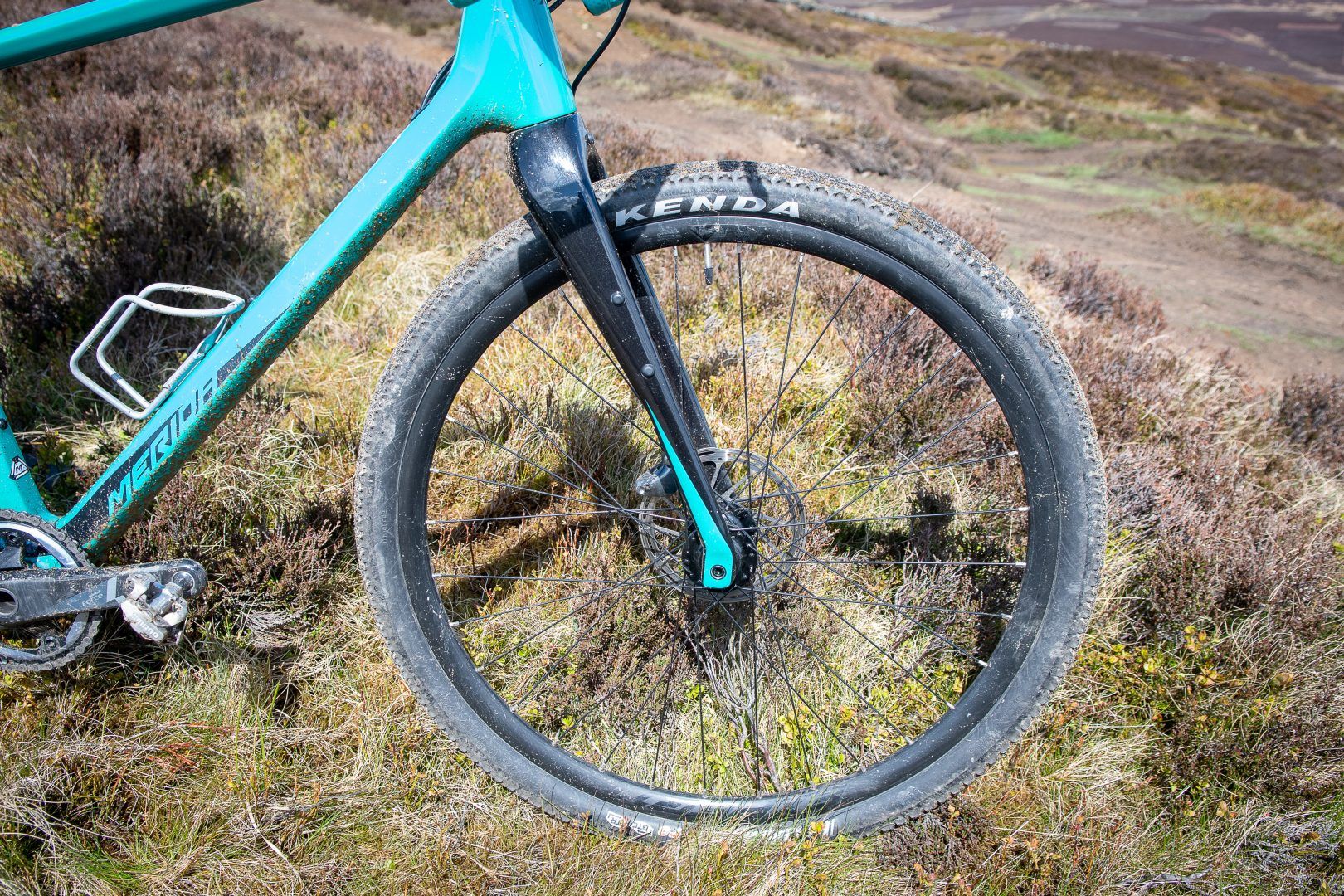
Regardless of which colour you choose, the Silex+ 6000 comes with an SRAM Force1 hydraulic disc brake groupset. A single 38T chainring is paired to an 11-speed cassette with a 42T bottom cog, making the evil steep climbs of the South Pennines a much more bearable proposition than on some bikes of its ilk.
Wheels and finishing kit are own-brand, but it’s all decent stuff. Merida’s Expert wheels have VP hubs with 32 conventional spokes, alloy rims that have a nice deep profile, and are tubeless compatible. The inline carbon seatpost, 80mm stem and oddly swept-back handlebars are specced to balance out the length of the bike and make it ride more normally than you’d expect from its imposing silhouette. In theory, anyway. The saddle has a little holder for a multitool, although our test bike didn’t come with one, hence the tool roll in the photos.
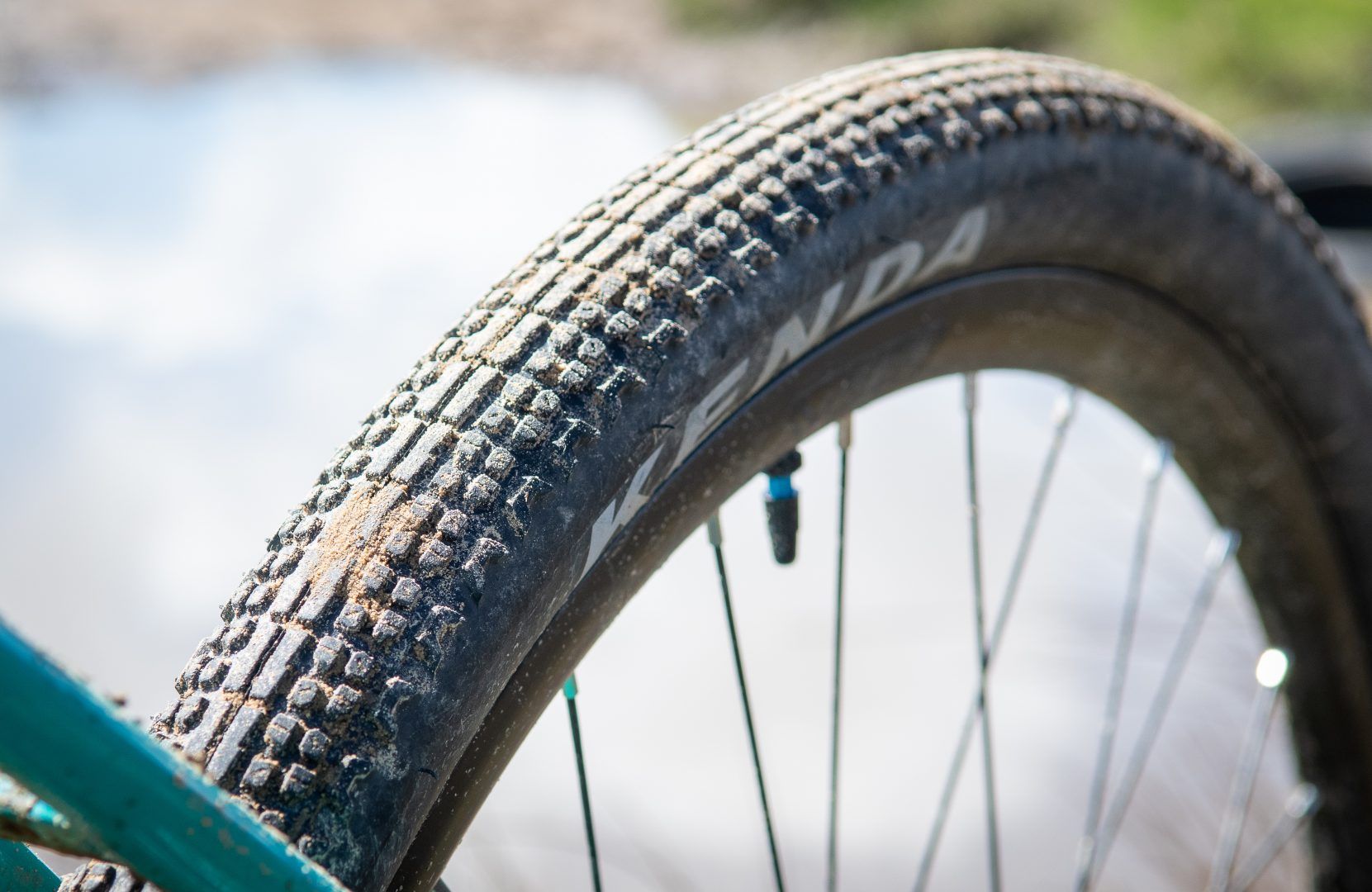
The Kenda Flintridge Pro tyres are 45mm width, the maximum size the frame can take in 650B mode. They’re tubeless compatible, with a pattern that hints at rolling speed over wet weather traction. They don’t come set up tubeless though, so factor in a bit of patio faff before you can hit the trails at full tilt.
The Ride
I was a bit nervous before the first ride on the Silex. From a casual glance it looks like it’ll be as comfortable as borrowing your dad’s bike was when you were a teenager. But it’s much more pleasant out on the trail than appearances might suggest. It’s long, for sure, but the tall head tube immediately brings your body into a relaxed position, and the backsweep on the bars helps offset the length. The frame and forks are responsive and direct without beating you up.
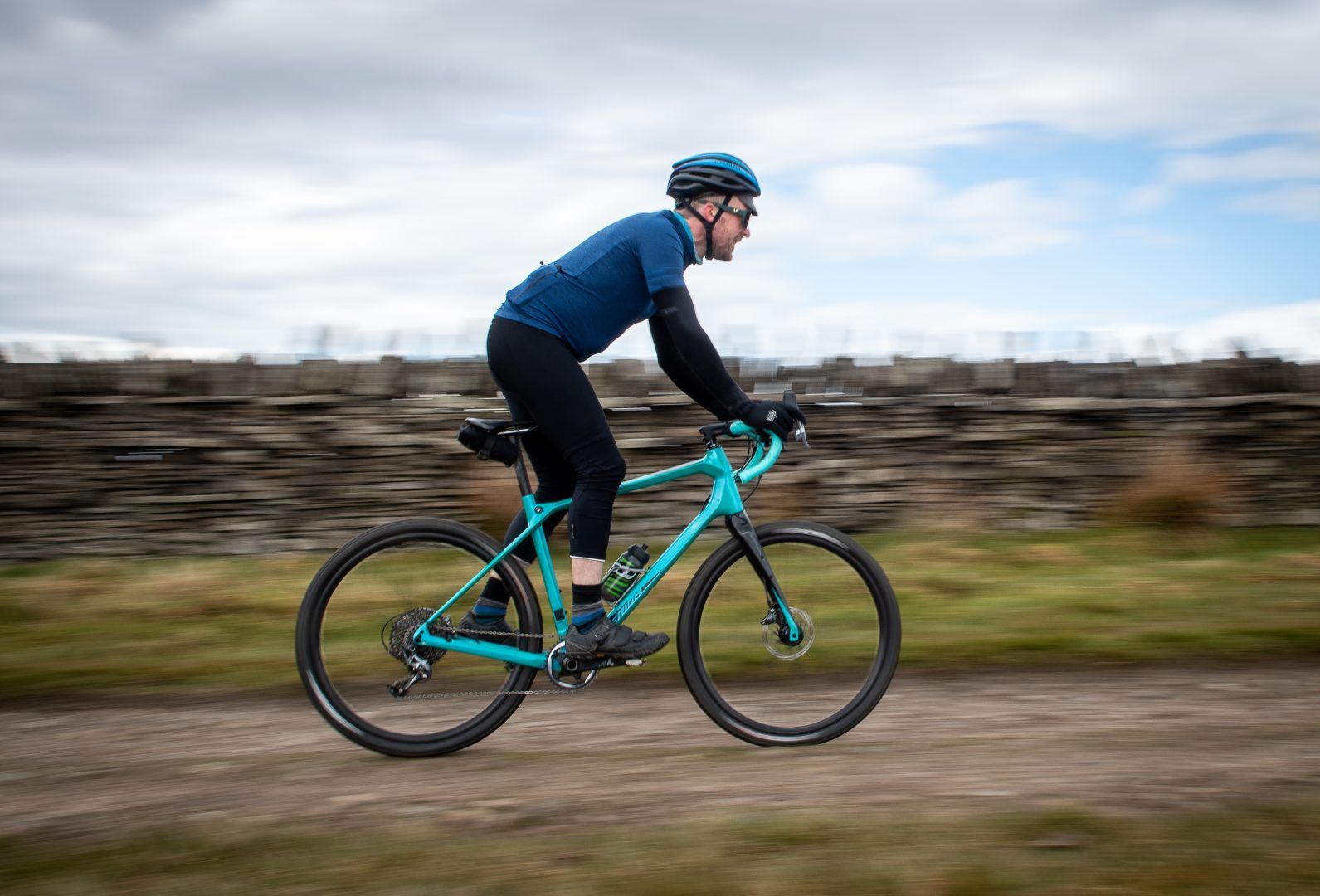
Although there are 650B gravel tyres around that have more girth and bite than the Kendas, they suit the spry, speedy character of the bike nicely. With the rear set up tubeless I didn’t have any punctures, and they coped with slippery spring trails pretty well, considering their fast-rolling tread pattern. If your regular rides involve slippery clay or mud, you’ll want to fit something with more knobs.

Climbing is also a pleasure thanks to the low gearing, ample traction and the roomy frame, which gives plenty of scope to shift your weight around. Pedal strikes are a bit of an issue on rocky trails, and I feel like the 650B version of the Silex should have come with shorter cranks as standard, rather than just shorter cranks for smaller sizes of bike.
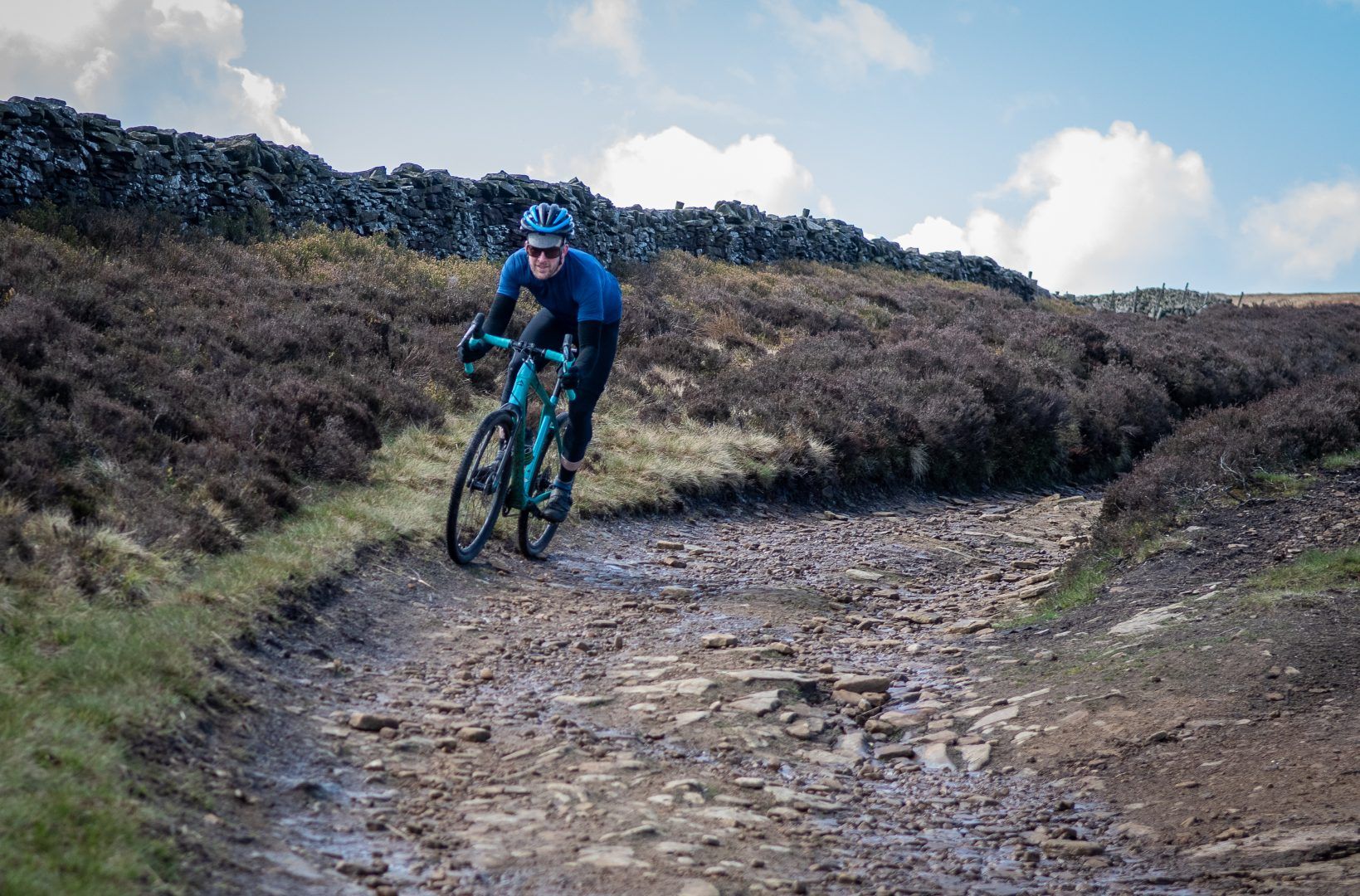
The length of the Silex makes it nicely balanced and stable downhill. Even though it’s perfectly possible to ride tricky descents on the hoods of a drop bar bike, I generally prefer to be on the drops for a more secure grip and better braking. On some drop bar bikes, particularly those designed to be ridden with the stem slammed as low as possible, the low front end means that as soon as you get on to anything steep it feels like you’re getting ready to do a forward roll over the bars. Not so with the Silex – the riding position encourages you to tackle techier trails, even if they need a more cautious approach than on a mountain bike.
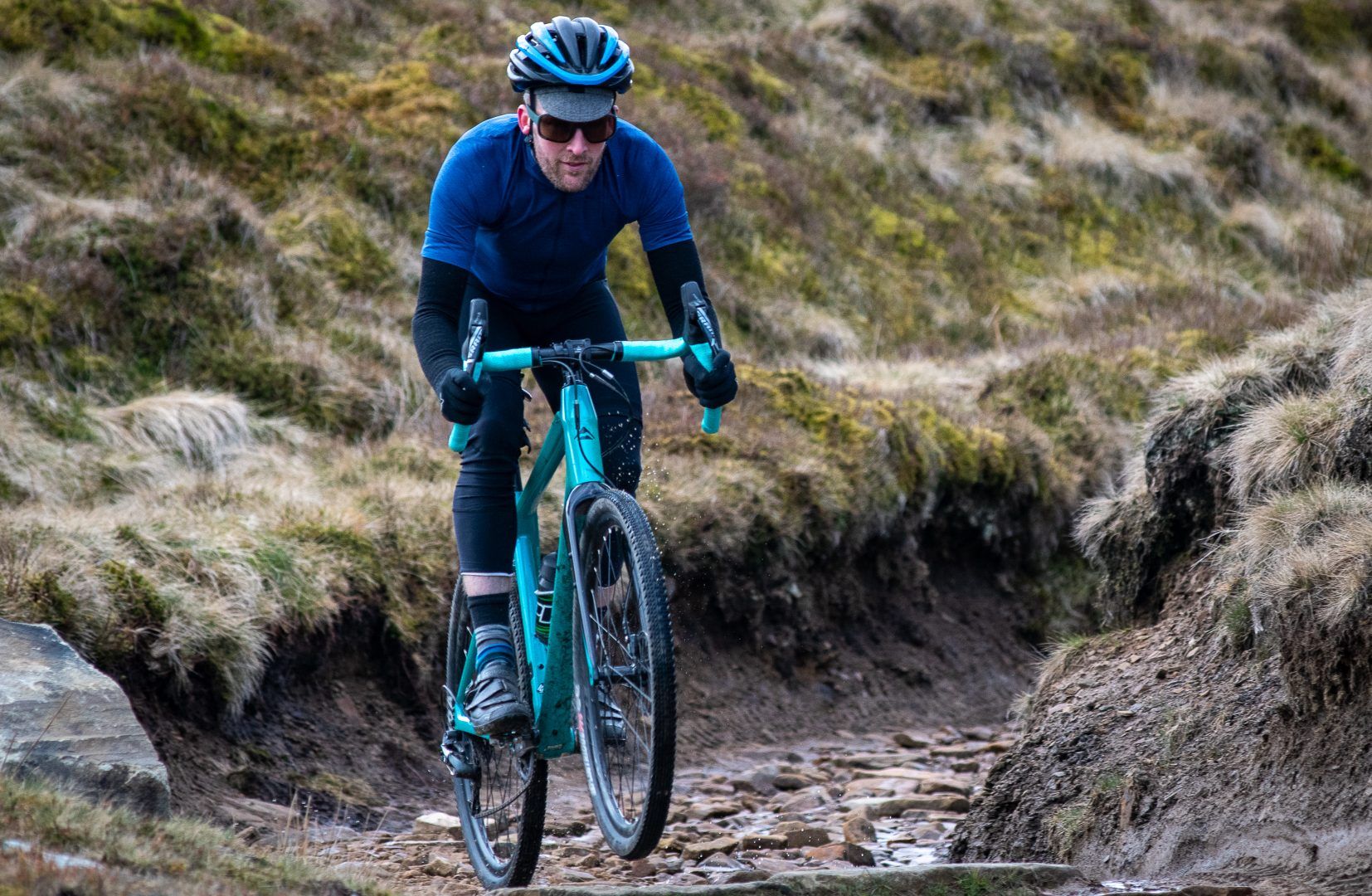
The SRAM Force groupset behaved impeccably over a relatively short test period, although it wasn’t quite the quantum leap up from the lower-end Apex range that I was expecting. The brakes felt a tad underpowered, although still much more effective than cable discs. As is common on complete bikes, the rear wheel uses an HG driver, so you don’t get a 10T top sprocket on the cassette. It’s not a big deal if you’re mostly riding off-road, but the Silex+ 6000 does feel a bit under-geared on long, steady tarmac descents. On the other hand, if you’re loading it up for bikepacking, the wider range on offer at the low end will be very welcome indeed, and I found myself riding lots of climbs I was half-expecting to walk up.
Durability Notes
As previously mentioned, in 650B flavour this bike sits pretty low to the ground. Depending on what sort of terrain you ride in, this may not be an issue, but round these parts the trails tend to be peppered with large, abrasive rocks. As a result of this the cranks have already picked up a few battle scars in their carbon lacquer. If I was buying this bike with the intention of riding it anywhere remotely rocky, I’d treat it to some rubber crank boots, and if I was speccing this bike I’d put shorter cranks on it. Other than that, the bike held up to everything a couple of months’ riding could dish out.

Three things we loved
- The geometry looks weird, but it works.
- The low gearing is great off-road.
- The frame hits the balance between comfort and speed.
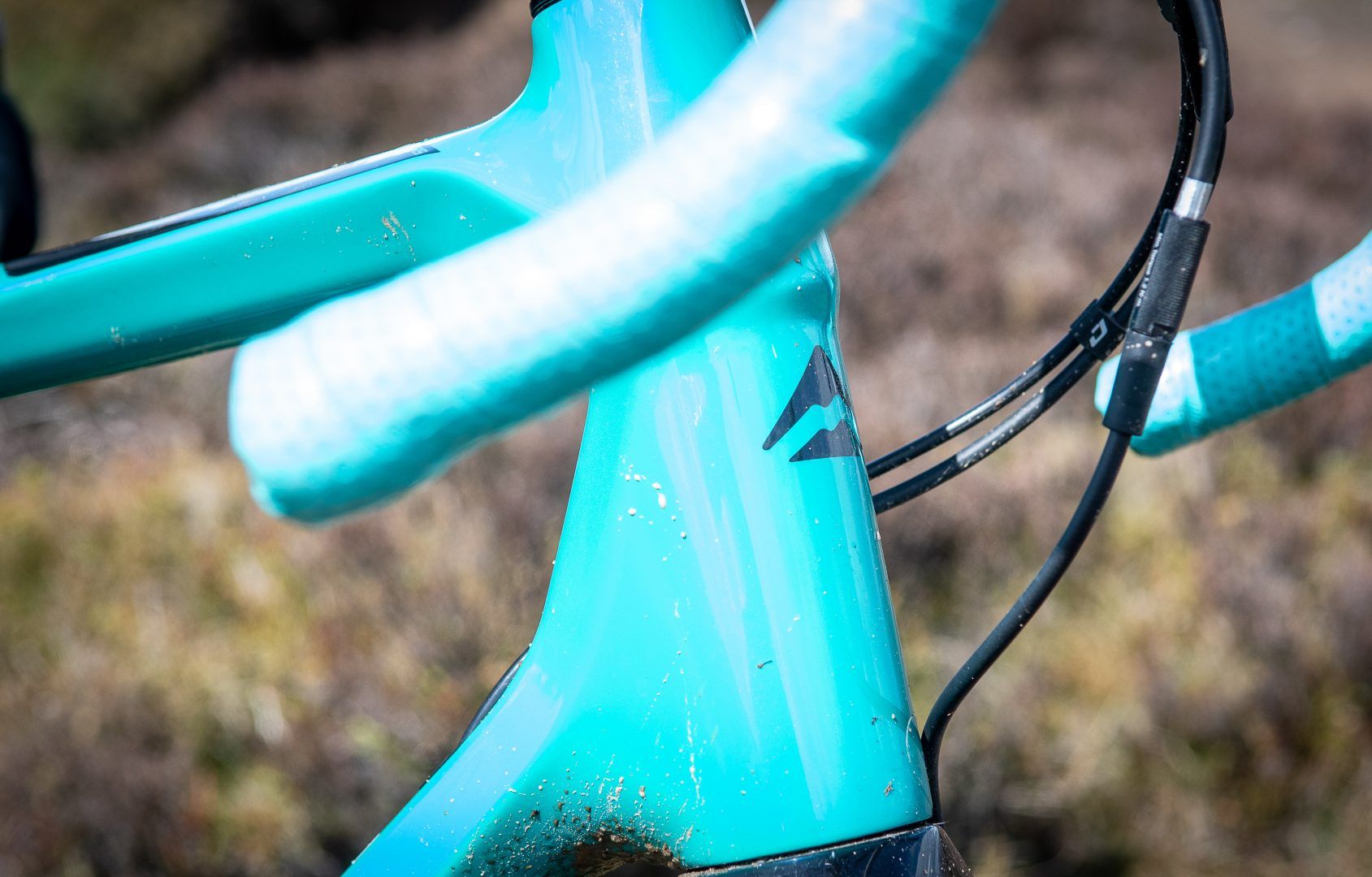
Three things that could be improved
- Pedal strikes are an issue thanks to crank length.
- The looks won’t be everyone’s cup of tea.
- No 10T sprocket so it can feel undergeared on the black stuff.
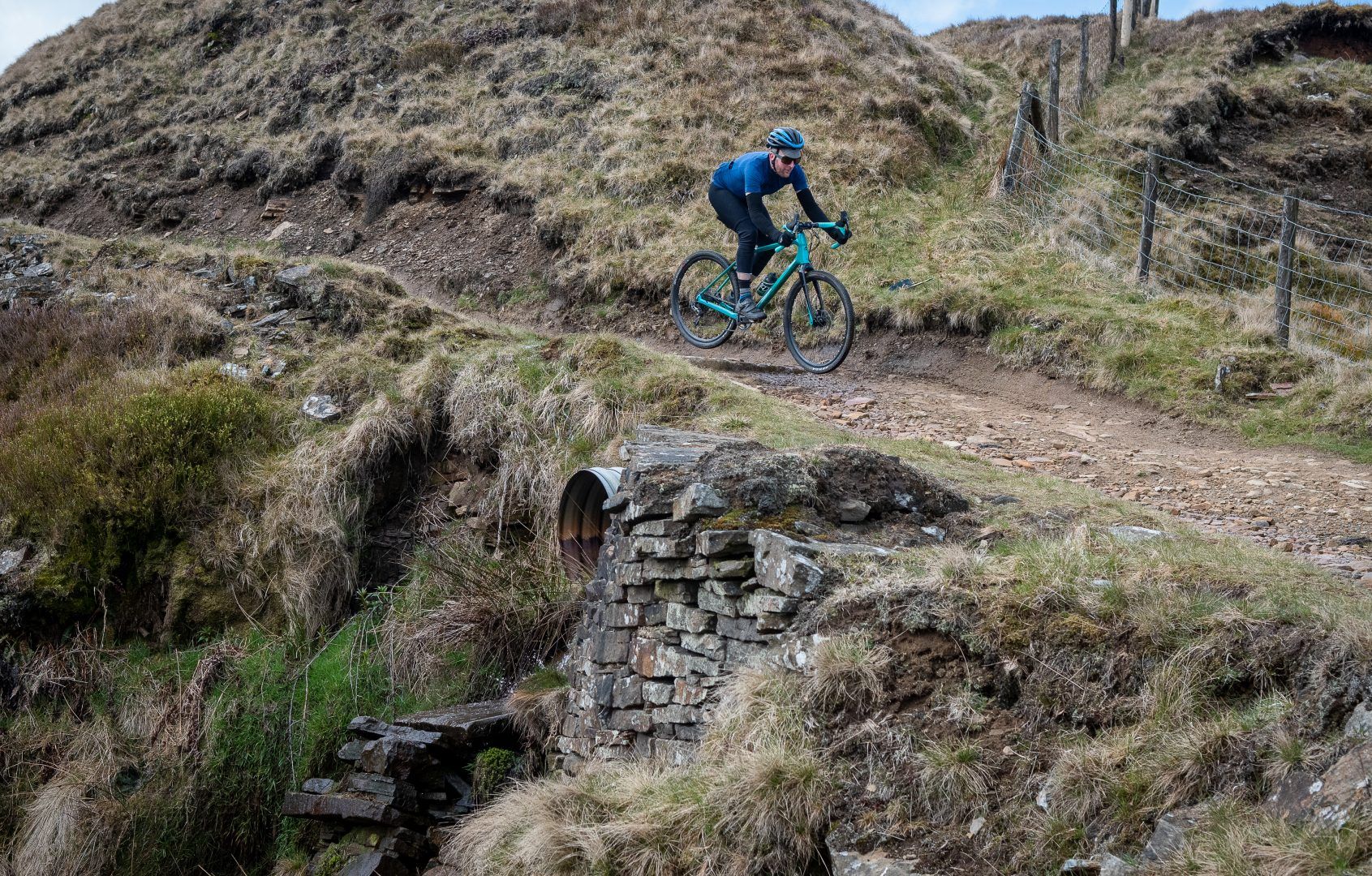
Overall
Over the past couple of months I’ve used the Merida Silex+ 6000 for quick moorland blasts, all-day rides and all points between, and it was a pleasure for all of them. From a lap of the Mary Towneley Loop to a tour of Calderdale’s cobbled climbs, its big tyres, relaxed riding position and low gearing give it that extra bit of comfort which many gravel bikes lack. The ability to slot 700C wheels into the frame also gives you extra versatility, and with 700Cs fitted I could easily imagine racing cross or commuting on the Silex one day, then loading it up with bags and heading out into the wild the next. For the rocky terrain of the South Pennines, it’s let down slightly by its lack of ground clearance, but other than that it’s a fast, responsive gravel bike that’ll take on trails where others feel out of their depth.
Merida Silex+ 6000 Specification
Frame // Silex+ CF2
Fork // Merida Silex CF2
Wheels // Merida Expert CX, VP 173SB / VP 273SB hubs
Tyres // Kenda Flintridge Pro
Chainset // Sram Force 1, 38T, 170 mm-XS/S, 172.5 mm-M, 175 mm-L/XL
Cassette // SRAM PG-1130
Shifters // SRAM Force 1 HRD
Derailleur // SRAM Force 1
Brakes // SRAM Force 1 HRD
Stem // Merida Expert CW, 80 mm
Bars // Merida Expert GR
Seat Post // Merida Expert CC
Saddle // Merida Expert CC
Sizes Available // XS, S, M, L, XL
Size Tested // M
Weight // 8.89 kg /19.6lb (Claimed)
Price // £2,700.00

